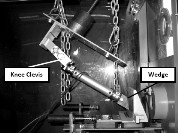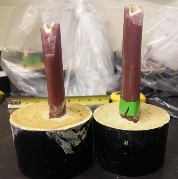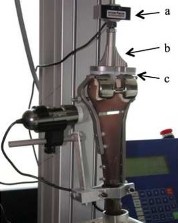Injury Biomechanics Lab
Main menu
Former Students
Alberto Martinez received his Master's degree in Mechanical Engineering in 2016. Alberto's research focused on the effect of impact duration on tibial fracture criteria for automotive and military applications.

Avery Chakravarty completed her Master's degree (MASc) in Mechanical Engineering in 2016. As an undergraduate student, she helped to design and construct a testing apparatus to deliver high-

Muir Cameron was a visiting mechanical engineer student from the University of Glasgow for six months during 2016, completing his Master's (MEng) project. His project focused on assessing whether composite bones can be used in impact loading research and fracture repair studies.

Chris Smolen completed his Master's degree (MASc) in Mechanical Engineering (Biomechanics) in 2015, and worked in the lab as a research associate following his graduation. He previously obtained his Bachelor's in Mechanical Engineering from McGill University in 2013. His research involved developing a finite element model of the foot and ankle that accounts for variation of ankle posture. This model helped determine which postures cause the ankle to be at greatest risk of injury so that suitable protective systems can be designed for vehicles.

Clodagh Duffy completed her MEng final year project in Biomedical Engineering as a visiting student from University of Glasgow for 6 months in 2015 (bringing a nice international flavour to our lab!). Her project was on analysis of dynamic impact on the foot/ankle complex during a vehicular collision via finite element modeling. She is currently completing her degree, and hopes to work in rehabilitation engineering when she is finished.

John Van Tuyl completed his Master's (MASc) in Mechanical Engineering in 2014. His research focused on evaluating the impact response of the Anthropomorphic Test Device (ATD, or 'crash test dummy') lower leg under altered postures. He then developed an instrumented boot for the purposes of quantifying loads applied to the various regions of the foot under loading, which can be used in the future for creating injury criteria specific to the foot.

Vivega Vijayakumar completed her Master's in Biomedical Engineering (MASc) in 2013. Her research was focused on evaluating the regional variations through the tibia, and comparing them to properties predicted using CT scanning. She conducted indentation testing of cancellous bone of the proximal tibia, and four point bending of segments of cortical bone, to quantify the properties of cadaveric tibias, to inform the design of orthopaedic devices as well as the material property assignment for finite element models.

Aaron Muizelaar completed his Master's (MASc) in Mechanical Engineering in 2012, under the co-
